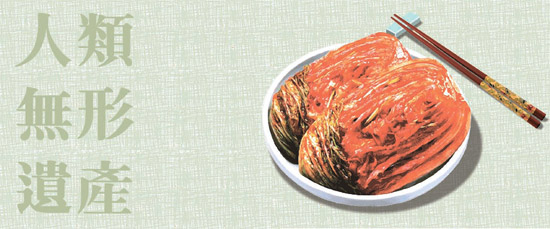Making of kimchi as rich as sharing it

The October verse of the poem by Jeong Hak-yu (1786-1855) titled “Farmers Songs by the Month” suggests that making kimchi was already a widespread practice in the 19th century. Peppers and pepper powder were added to kimchi after the 1800s. According to historic documents, kimchi was mostly salt-pickled or vinegar-marinated in the 17th and 18th centuries. In order to add color, red pigments from cockscomb flowers were used.
Did Jeong, the late Joseon-period scholar and second son of Jeong Yak-yong, make kimchi himself and write the poem? While he farmed in Yangju, Gyeonggi, it is likely that he had women and servants make the traditional pickles. Nevertheless, it is still quite pleasant to imagine the Confucian scholar of the patriarchal period observing farming practices and traditions and writing about them.
Recently, my wife’s family made kimchi together at her sister’s house. I didn’t exactly make kimchi myself. I was more of an observer. Four sisters and their husbands got together, but the men didn’t offer much help. In the old times, we could have dug a pit to bury the kimchi jars. But all we could do was move heavy jars and pass out the seasoning. Making kimchi with 90 heads of cabbage and other varieties took two days. Fortunately, my sister-in-law lives in a house with a yard. It would be nearly impossible to make so much kimchi in an apartment. In the early morning, cabbages and radishes were immersed in salt water and turned upside-down twice. While the vegetables were being pickled, spices were prepared and garlics and scallions were cut. I had no idea live shrimps were so expensive. I felt very content when I returned home with several containers filled with all kinds of freshly-made kimchi.
In the eighth Unesco Intergovernmental Committee for the Safeguarding of the Intangible Cultural Heritage, “kimjang,” the practice of making kimchi in bulk around the early winter, has been recognized as an Intangible Cultural Heritage of Humanity. The spirit in “The Farmers’ Songs by the Month” has gained international recognition. Unesco has highly regarded the culture of “making and sharing kimchi.” The pickled vegetable itself is a delicacy, but the tradition of working together as a community and sharing the outcome is especially a valuable heritage of humanity. How far have we come? I was reminded of my reservation of having kimchi for breakfast because of the unique pungent smell when I was a foreign correspondent a long time ago.
*The author is an editorial writer of the JoongAng Ilbo.
By NOH JAE-HYUN










with the Korea JoongAng Daily
To write comments, please log in to one of the accounts.
Standards Board Policy (0/250자)